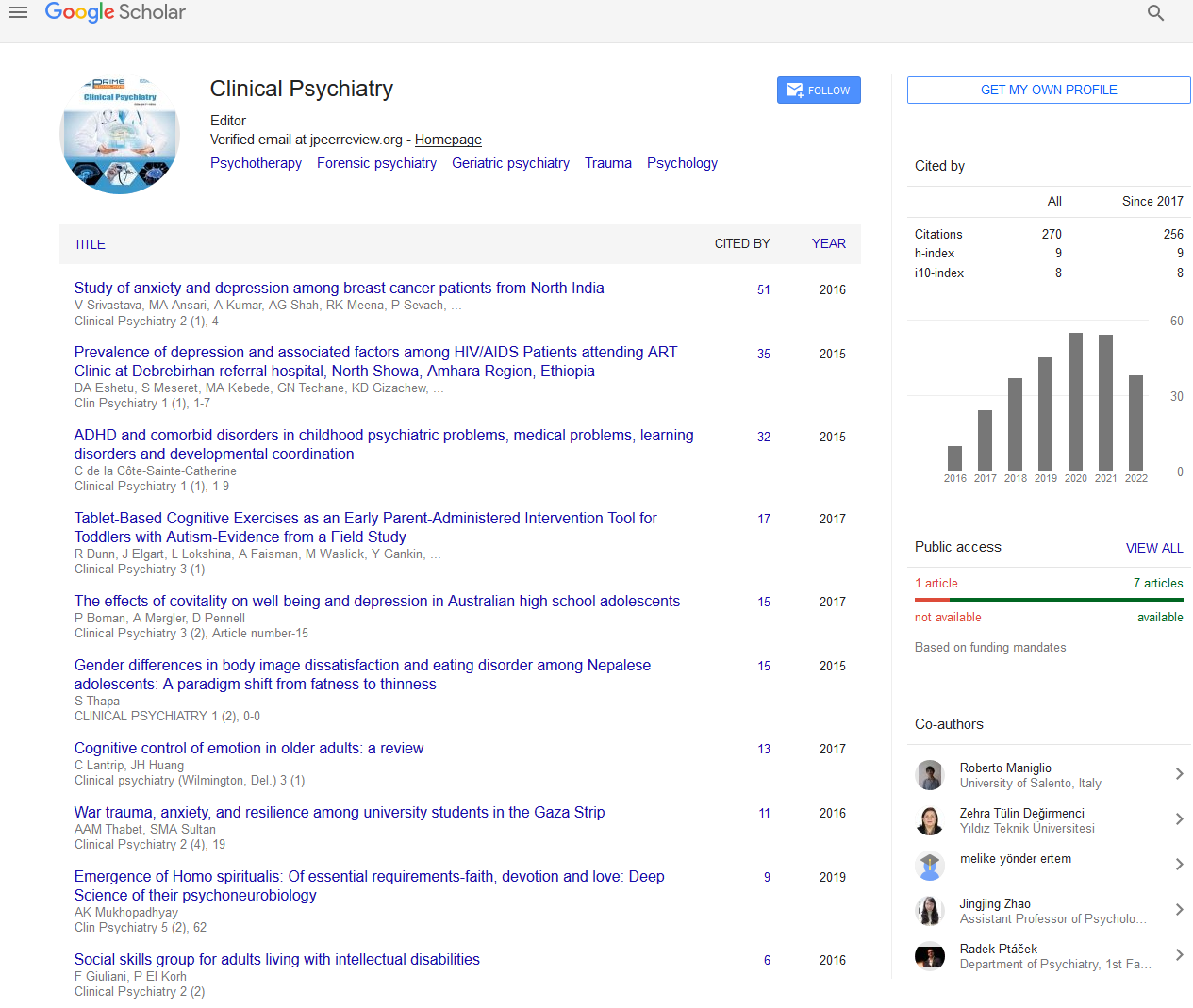Commentary - (2023) Volume 9, Issue 2
Developmental Delay and Autism Spectrum Disorder are the Consequences of Tuberous Sclerosis Complex
Hong Su*
Department of Psychiatry, University of Michigan, USA
*Correspondence:
Hong Su,
Department of Psychiatry, University of Michigan,
USA,
Email:
Received: 01-Mar-2023, Manuscript No. IPCP-23-16135;
Editor assigned: 03-Mar-2023, Pre QC No. IPCP-23-16135 (PQ);
Reviewed: 17-Mar-2023, QC No. IPCP-23-16135;
Revised: 22-Mar-2023, Manuscript No. IPCP-23-16135 (R);
Published:
29-Mar-2023, DOI: 10.35841/2471-9854.23.9.14
Description
Tuberous Sclerosis Complex (TSC) is an inherited neurocognitive disorder that occurs in 1 in 6,000 to 10,000 live births. Epilepsy has been reported in upto 90% of his TSC patients and often begins in infancy. Seizure semiology varies from patient to patient and can change throughout the patient’s lifetime. Treating seizures with TSC is very difficult. Recently, a large study showed that more than half of all patients examined suffer from intractable epilepsy. The clinical manifestations of the TSC patients are highly variable. During brain development, neurons can evolve aberrant morphologies and migrations, resulting in typical features of cortical tubers and radial migration lines. These pathological changes in the brain tissue are associated with epileptogenesis in TSC patients. Dysregulation of the Mammalian Target of Rapamycin (mTOR) in neurons may also contribute independently to epileptogenesis. Developmental delay and autism spectrum disorder are also common consequences of the TSC, and 40% of patients have intellectual disability.
Various Antiepileptic Drugs (AEDs) are available to treat seizures, as are non-pharmacological approaches such as surgery and the ketogenic diet. Recent clinical recommendations from the International TSC Consensus Conference state that anticonvulsant therapy for TSC in general should follow anticonvulsant therapy for other epilepsy, and in 2012 the TSC Expert Panel concluded that infants and aminobutyric acid, actuation mechanism for older children. In general, first-line treatment of partial-onset seizures in children is based on C-level evidence and expert experience. The etiology of epileptic seizures is known to be an important factor in the likelihood of resistance to treatment, and the International League Against Epilepsy (ILAE) recommends consideration of underlying medical conditions when choosing an AED. Vigabatrin is the most effective and first-line therapy for the treatment of infantile the spasms in TSC. For the other types of seizures, evidence of efficacy for Lamotrigine (LTG), Levetiracetam (LEV), and Clobazam (CLB) comes from studies in small patients. For other AEDs, the specific efficacy in TSC is unknown. Commonly used AEDs are Valproic Acid (VPA), LEV, Topiramate (TPM), Oxcarbazepine (OXC), and Carbamazepine (CBZ).
Recently, an mTOR protein inhibitor was approved by the U.S. Food and Drug Administration (FDA)/European Medicines Agency (EMA) for TSC-associated Subependymal Giant Cell Astrocytoma (SEGA) and renal angiomyolipoma approved for the treatment. AEDs used as a third and subsequent option may still provide seizure reduction. However, the chances of remission became slim. Reduced efficacy of antiepileptic drugs used as later treatment options is also observed in the general epilepsy population. Begin screening children for epilepsy surgery and other non-pharmacologic options early in treatment, as efficacy declines rapidly after failure of the first two or three antiepileptic drugs is recommended. Non-pharmacologic therapies used in our cohort were epilepsy surgery, a ketogenic diet, and vagus nerve stimulation. Epilepsy surgery was very effective for all five of her children, four of whom were seizure-free. New methods are then needed to improve epileptic outcomes in TSC. Recent evidence suggests that close EEG monitoring in children with newly diagnosed TSC can detect epileptic discharges before the onset of clinical seizures.
Acknowledgement
None.
Conflict of Interest
The author’s declared that they have no conflict of interest.
Citation: Su H (2023) Developmental Delay and Autism Spectrum Disorder are the Consequences of Tuberous Sclerosis Complex. Clin Psychiatry. 9:14.
Copyright: © 2023 Su H. Thisis an open-access article distributed under the terms of the Creative Commons Attribution License, which permits unrestricted use, distribution, and reproduction in any medium, provided the original author and source are credited.

